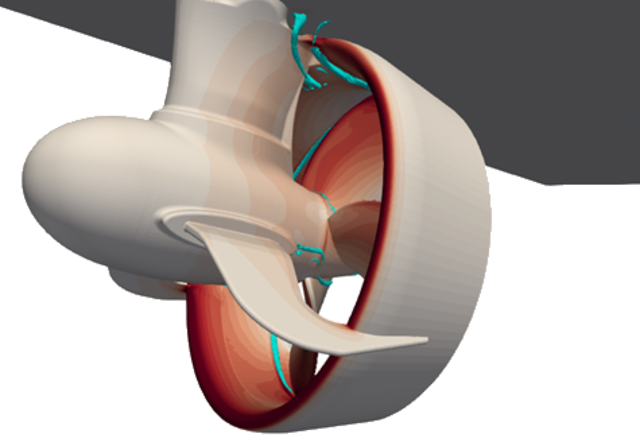
The new nozzles are equipped with SCHOTTEL’s patented ProAnode technology (bottom right) as standard. Its smooth overall surface reduces flow interference, thus leading to lower fuel consumption pays and, ultimately, reduced operating costs.
With the launch of the newly developed SDC40 nozzle, SCHOTTEL expands its range of high-performance nozzles. The SDC40 sets new standards in terms of compact design and free running efficiency – and thus even leads to reduced operating costs compared to the nozzles of other market participants. The SDC40 nozzle also stands out with its optimally designed propeller geometries and exceptional performance characteristics. It comes equipped with SCHOTTEL patented ProAnode as standard and is now available for all SCHOTTEL Rudderpropellers.
Best free running efficiency
In addition to proven nozzles such as the multipurpose SDV45 nozzle with maximum bollard pull and high free running efficiency, SCHOTTEL now introduces the SDC40. Optimized by means of Computational Fluid Dynamics (CFD), the new nozzle is characterized by its small outer diameter. This compact geometry allows for optimal adaption to different vessel designs and applications. At the same time, the high-performance nozzle is also suitable for conversions and modernizations with limited installation space. With the SDC40, an abbreviation of SCHOTTEL Duct Cruise, the customer profits from top free running efficiency during transits at higher speeds. Beyond this, a higher maximum speed is achievable.
SCHOTTEL exclusive: ProAnode
The new nozzles are equipped with SCHOTTEL’s patented ProAnode technology as standard. The altered positioning of the anodes from the outside surface into the cross-section of the nozzle leads to an extended lifecycle of the thruster and protects the anodes against external impacts. Furthermore, it offers additional operational potential as it contributes to the nozzle’s optimal hydrodynamic flow. Its smooth overall surface reduces flow interference, thus leading to lower fuel consumption and, ultimately, reduced operating costs.